Podartist79
Western Thunderer
Thank you Julian - very kind.
I’ve not cracked this yet, probably never will, but I’ll keep trying to up the realism.
I’ve not cracked this yet, probably never will, but I’ll keep trying to up the realism.
Thank you Steve.The realism of those photo's is just stunning! Hard to believe they are not real!
On the topic of worn lettering, it was not just the sign writing paint wearing off. The body colour beneath would have been protected so would be closer to its original colour than the surrounding paint. Also the type of paint used should be considered when weathering, some paint types and colours fade while others darken. As Bob Essery noted in Midland Wagons the Midland grey was mixed from white lead and some black so started pale and ended up near black when exposed to high atmospheric sulphur levels, while the lettering stayed bright white as it contained oxalic acid so was self cleaning. The other mainline companies also used oxalic paint for lettering but I have no idea if PO wagon letterers also used it.A set of RTR wagons ‘straight out of the box’ I’ve just completed the weathering of. I believe the two coal wagons are Dapol and the vans Minerva(?).
I enjoyed reproducing the worn lettering. I’ve got a lot more work to do on the ‘worn lettering area’ in future though…View attachment 184738View attachment 184739View attachment 184745View attachment 184740View attachment 184741View attachment 184743View attachment 184742View attachment 184744
Morning Graham.Neil.
Please describe your method for creating a puddle and damp ground.
thank you, Graham
Thank you very much for this information.On the topic of worn lettering, it was not just the sign writing paint wearing off. The body colour beneath would have been protected so would be closer to its original colour than the surrounding paint. Also the type of paint used should be considered when weathering, some paint types and colours fade while others darken. As Bob Essery noted in Midland Wagons the Midland grey was mixed from white lead and some black so started pale and ended up near black when exposed to high atmospheric sulphur levels, while the lettering stayed bright white as it contained oxalic acid so was self cleaning. The other mainline companies also used oxalic paint for lettering but I have no idea if PO wagon letterers also used it.
Wow!, Come on, you're amongst friends, it's ok to say that's the real thing!I don’t get that much chance to weather ‘modern image’ stuff, but the things I have done I’ve thoroughly enjoyed. What I have undertaken has tended to be German in outline.
Here though, I’ve recently completed the weathering on this Dapol 122 unit.
The model is otherwise ‘out of the box’.View attachment 185608View attachment 185610View attachment 185609
Very kind Steve, thank you.Simply stunning! The attention to detail and the colours are just spot on and it all looks VERY real!
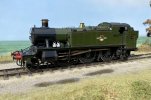
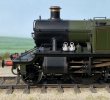
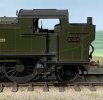
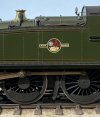
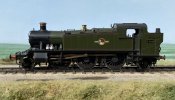
Thank you Steve.Another stunning piece! I found all this work very inspiring, so I watched the videos you did for the Gauge O Guild and had a go myself with a couple of 4mm wagons, underframes at least!
Have you ever done any 4mm stock? I found it was easy to put too much paint or powder on and start to obscure any detail and the sheen created doesn't look quite right on one of the wagons, that said I'm pleased with the result, enjoyed doing it and I'll keep practicing, I also think I may have to thin the paint a bit more too, I was worried it would just flood the area and not spread out. I just need to be a bit more refined I think.
